Where in the World is Earth’s Largest Natural Mirror?
It’s also the world’s largest salt flat
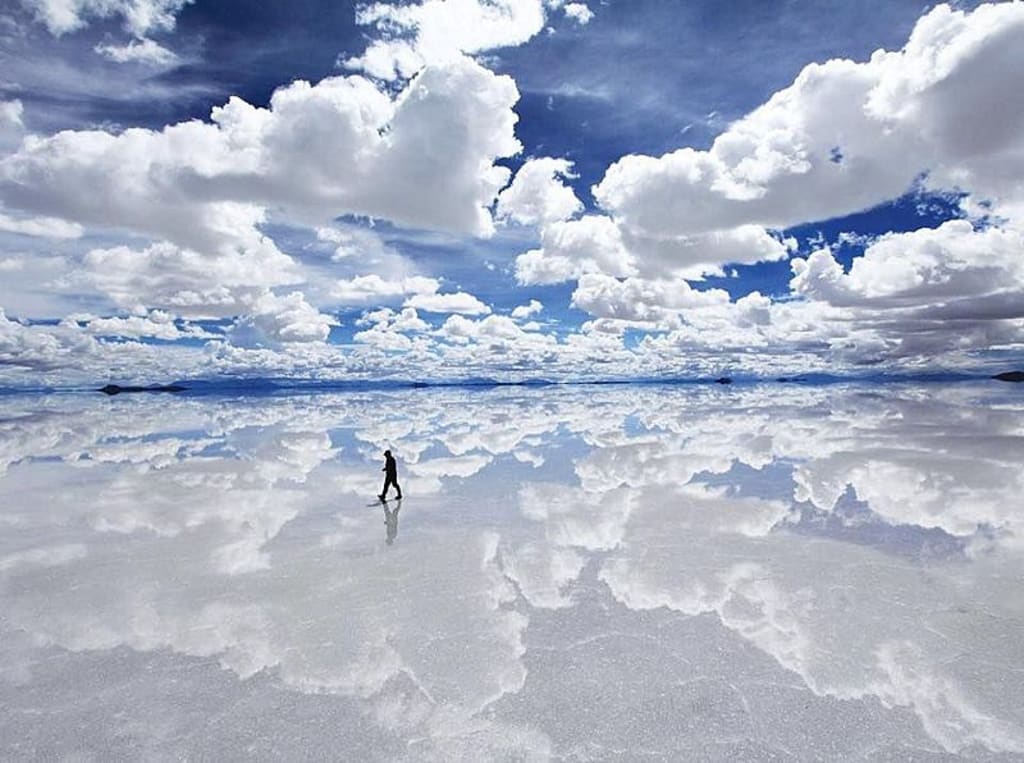
This week’s “Where in the World?” location has been deemed the flattest place on Earth as well as the world’s largest natural mirror!
The Salar de Uyuni
Covering an area larger than 150 countries in the world, the Salar de Uyuni is the world’s largest salt flat. Located in the Potosi region of Bolivia, and stretching almost 4,050 square miles, it was left behind by prehistoric lakes that evaporated. It sits 11,984 ft above sea level and the view is typically of a thick crust of salt that extends as far as the eye can see. It can even be viewed from space!
It is believed that an estimated 11 BILLION tons of salt are located within Salar de Uyuni.
However, in the rainy season, as nearby lakes overflow, it leaves a thin layer of water settling across the top of the salt. The water reflects the blue and white images of clouds and sky from above and the horizon disappears. Those driving across the area describe it as appearing to fly through the crowds.
To get to Salar de Uyuni, you can travel from the nearby cities of Uyuni, Tupiza, or San Pedro de Atacama (Chile).
History
Around 40,000 years ago, this area was covered by a lake known as Lake Minchin. As there were no drainage streams in the Altiplano, the water that trickled from the mountains gathered here.
Rising temperatures, coupled with a dryer climate for the area caused the water to slowly evaporate. The high salinity levels of the water caused a thick, salt crust to form, which is what we see today. Water that seeps underneath the salt continues to be evaporated by the sun, leaving behind more salt. The evaporation rate is TEN times more than precipitation, meaning that Salar de Uyuni’s salt production is never ending!
Naturally, as with any ancient natural wonder, legends have been told by locals about its creation.
The local campesinos (farmers) love to tell their stories of how the flat was formed. They say that the mountains surrounding the area were once giant people and the mountain goddess Yana Pollera had a relationship with both Thunupa and Q’osqo. When she became pregnant, the two male volcanos battled over who the father of the child was.
Yanna Pollera sent her baby far away for its protection, but she was worried that it couldn’t survive alone. She flooded the plain that lie between them with milk so that it could be fed. The milk eventually turned to salt.
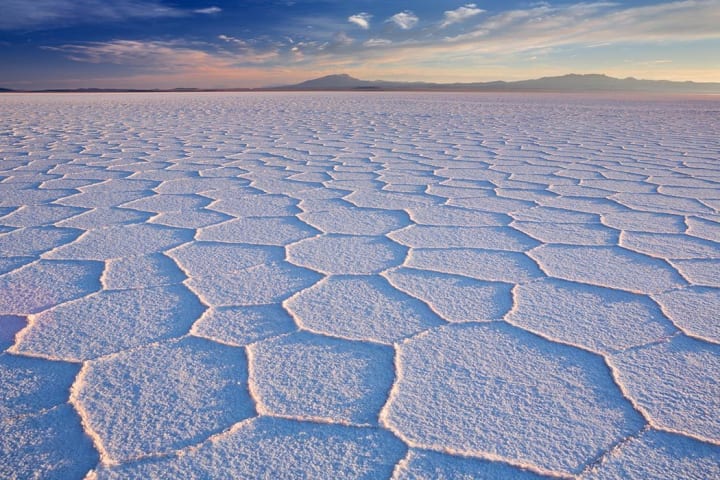
Another tale of Amaryan legend also claims that the mountains were people and that Tunupa and Kusku married. Kusku left his wife for Kusina. Tunupa was so heartbroken, and her tears are believed to have formed the salt flats.
The Salar’s Contributions to the Area
Beneath the salt flat, approximately 70% of the world’s lithium reserves are found. An industry was created to extract this important metal to use in the production of laptops, smartphones, and electric cars.
Its landscape is also perfect to portray locations that seem otherworldly. For example, it was used as a filming location for movies such as Star Wars, the Last Jedi, The Fall, Salt and Fire, The Unseen, and more.
During the summer, the area is covered with flamingos due to the high plankton content in the water that settles on the flats. As a matter of fact, three of the world’s six species of flamingos are found here, including the largest population of the rare James’ Flamingos. This species was actually thought to be extinct until 1956 when a small community of them was discovered.
The Salar serves as a major transport route across the Bolivian Altiplano, or high plane. Also, NASA uses this area to calibrate the altimeters of Earth observation satellites due to its large, flat area and clear skies.
Surrounding Area
In the areas surrounding El Salar de Uyuni, the wide array of different landscapes and scenery is extraordinary and can be viewed on most tours. Lakes of different colors, unique rock formations, geysers, and quinoa-producing villages are a dream for tourists who love to visit natural landscapes.
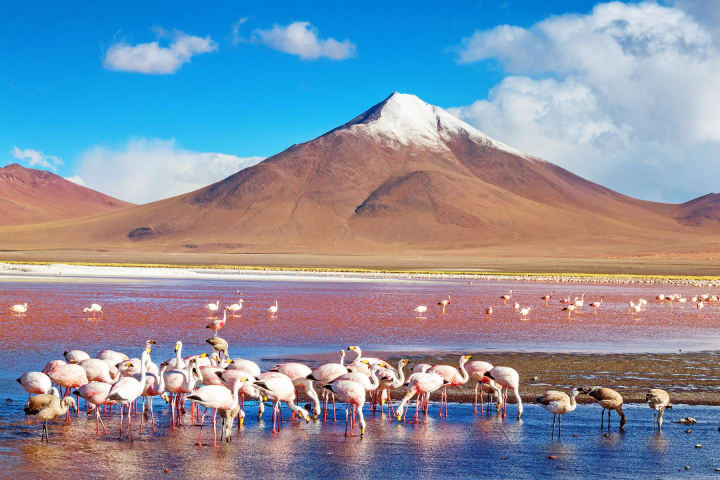
On the outskirts of Uyuni is the Cementerio de Trenes, or train cemetery. There you can see the rustic train carriages of earlier years and how the salty conditions have transformed them.
You can also visit Colchani, a salt factory, or natural features such as Valle de Rocas, Sol de Manana, or Arbol de Piedra.
If you’re looking for a more immersive experience, stay a night or two in one of the salt hotels in the area. In these unique hotels, the walls, floors, and even beds are made of salt blocks.
Visting this incredible natural wonder of Bolivia would definitely be the trip of a lifetime!
***Story previously shared on Medium.com by the author***
About the Creator
Kassondra O'Hara
Working mom who uses her curiosity to fuel the curiosities of others ~ Writes mostly history and true crime
Enjoyed the story? Support the Creator.
Subscribe for free to receive all their stories in your feed. You could also pledge your support or give them a one-off tip, letting them know you appreciate their work.


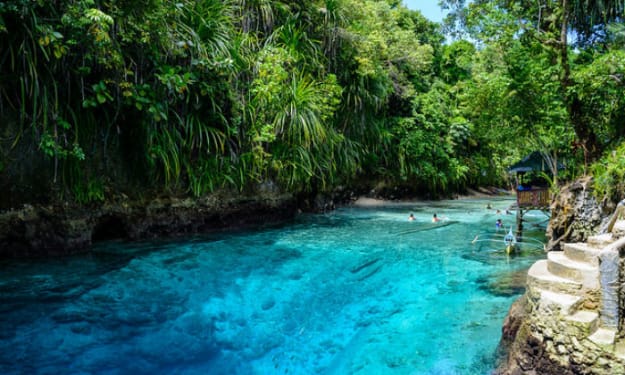
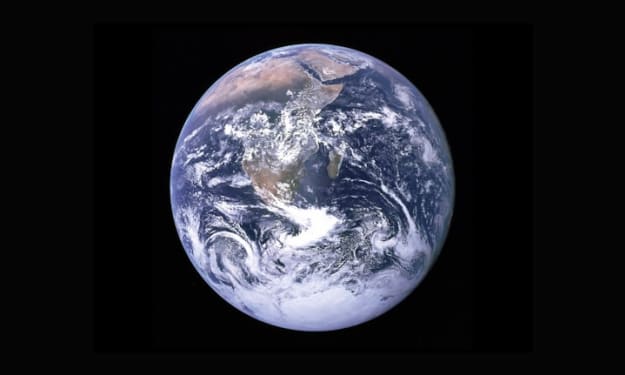
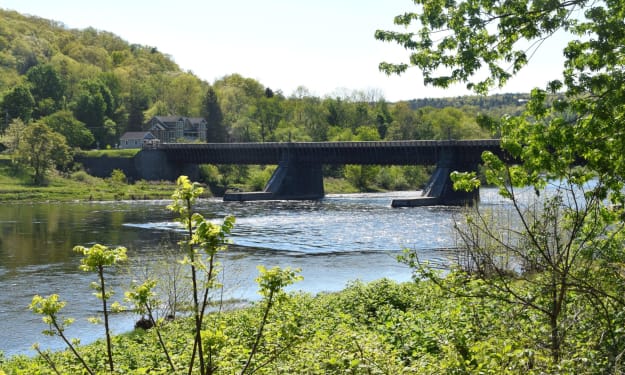

Comments (1)
Interesting and delicious content. Keep posting more now.